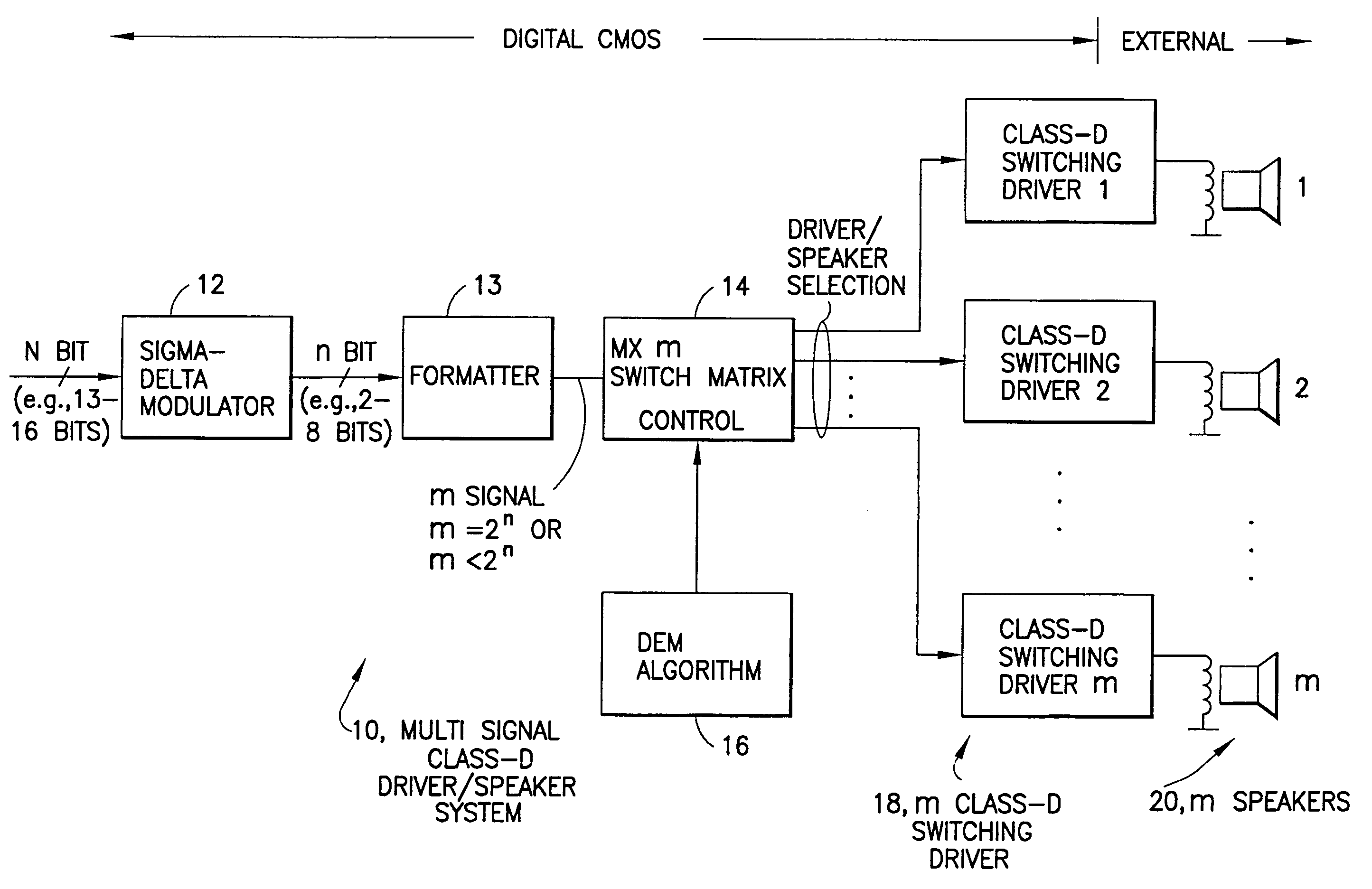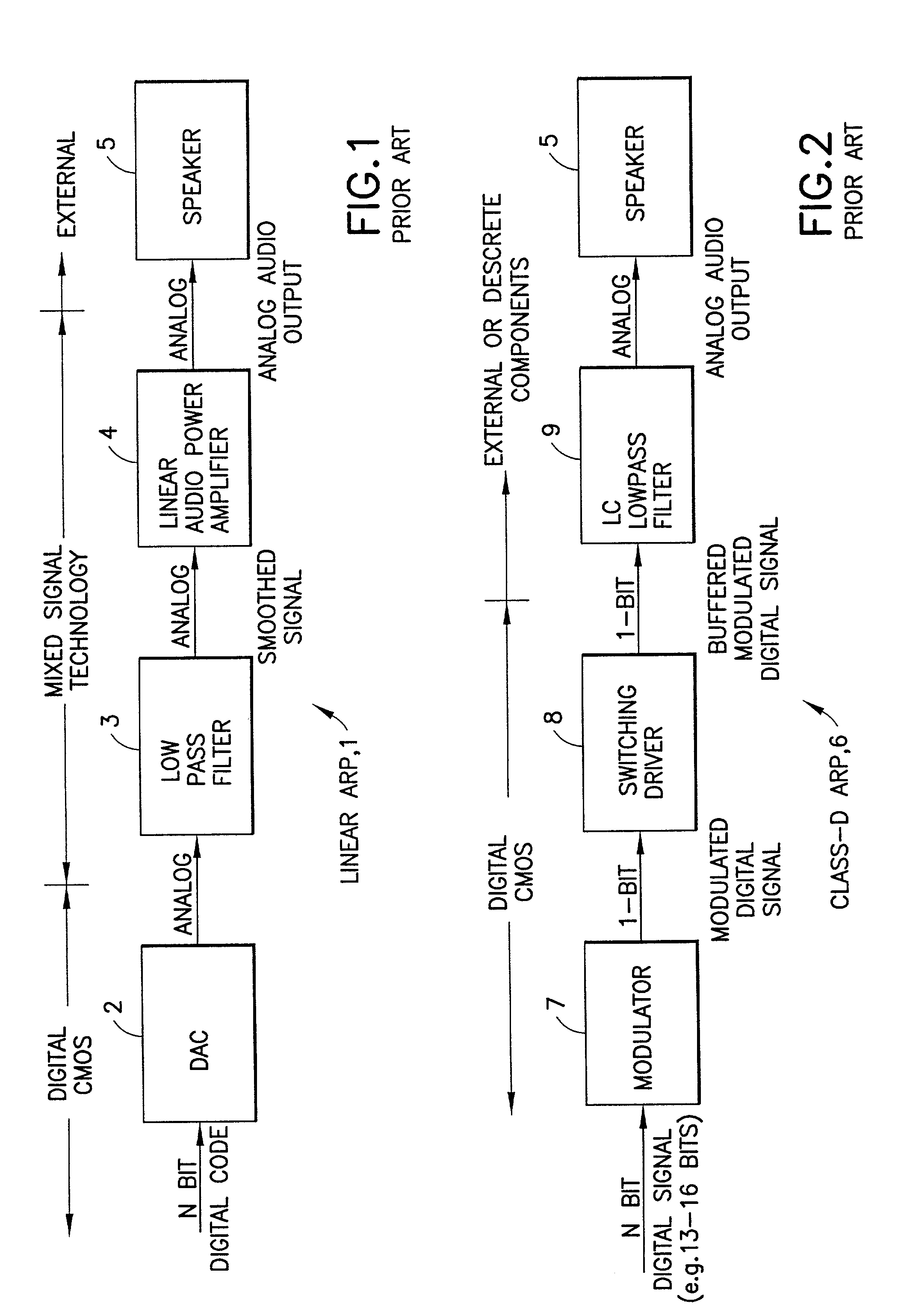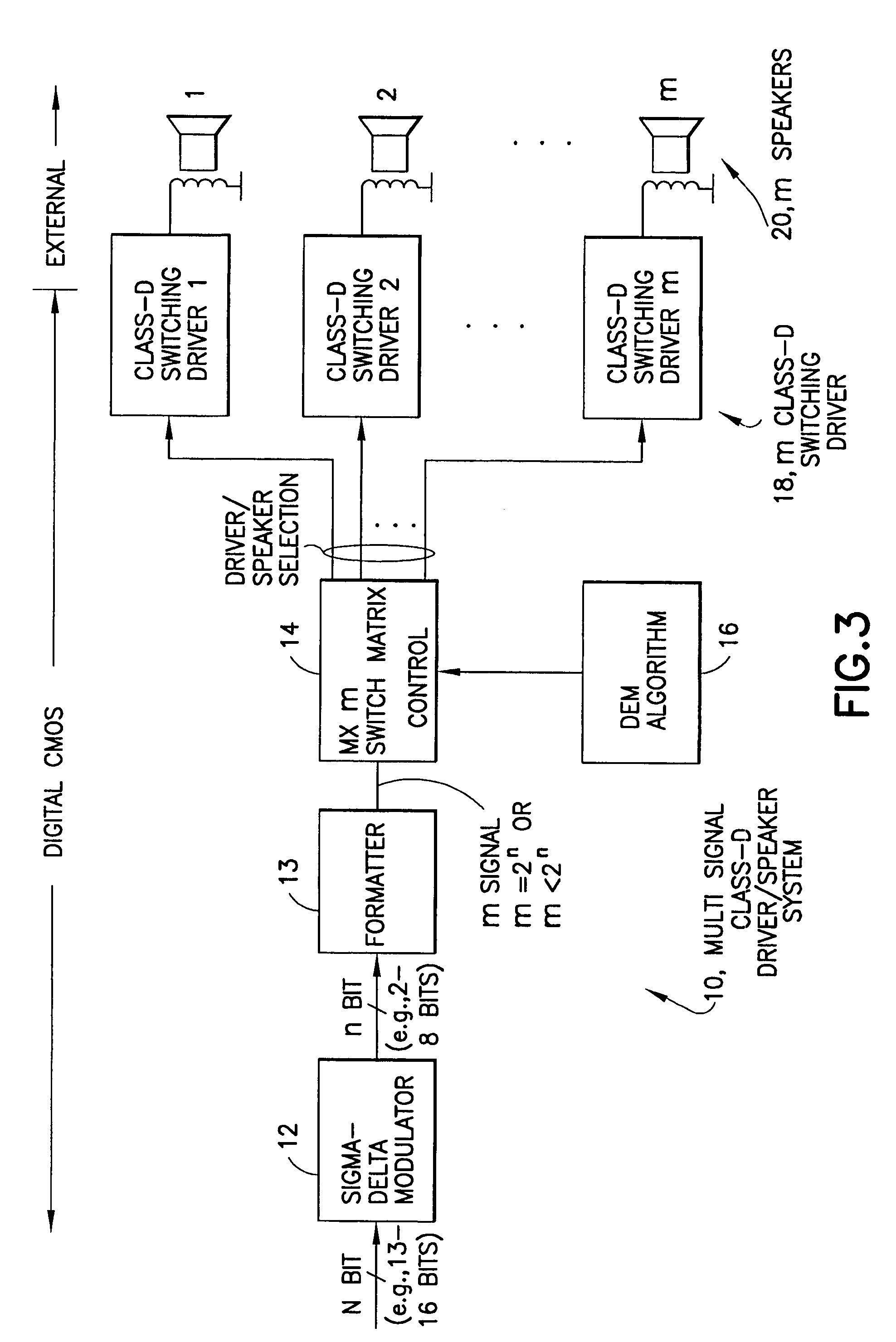Method and apparatus for implementing a class D driver and speaker system
a speaker system and driver technology, applied in the field of amplifier circuitry and speaker systems, can solve the problems of increasing the difficulty of linear power amplifiers b>4/b> to implement using these processes, increasing battery power consumption, and generating excess heat as well, so as to achieve the effect of spreading the distortion du
- Summary
- Abstract
- Description
- Claims
- Application Information
AI Technical Summary
Benefits of technology
Problems solved by technology
Method used
Image
Examples
Embodiment Construction
[0025]FIG. 3 is a block diagram of a multi-bit class-D driver and speaker system 10 in accordance with the teachings of this invention. The input signal is assumed to be an N-bit digital signal (e.g., 13–16 bits in binary or two's complement or some other suitable format) that is applied to a digital multi-bit sigma-delta modulator (SDM) 12. The sigma-delta modulator 12 converts the high accuracy input signal (e.g., 13–16 bits) to an oversampled lower resolution, but multi-bit (e.g., 2 bit to 8 bit), digital signal format. The known advantages of the sigma-delta modulator are employed to advantage in the input stage, in particular the inherent low quantization noise (e.g., 6 dB / additional bit) and more predictable noise spectra at high frequencies (at least 10 dB to 20 dB lower than that obtained with conventional 1-bit modulators).
[0026]The output of the SDM 12 is an n-bit (e.g., 2-bit to 8-bit) signal that is applied to a formatter 13, which provides an m signal output to a m-to-m...
PUM
 Login to View More
Login to View More Abstract
Description
Claims
Application Information
 Login to View More
Login to View More - R&D
- Intellectual Property
- Life Sciences
- Materials
- Tech Scout
- Unparalleled Data Quality
- Higher Quality Content
- 60% Fewer Hallucinations
Browse by: Latest US Patents, China's latest patents, Technical Efficacy Thesaurus, Application Domain, Technology Topic, Popular Technical Reports.
© 2025 PatSnap. All rights reserved.Legal|Privacy policy|Modern Slavery Act Transparency Statement|Sitemap|About US| Contact US: help@patsnap.com



